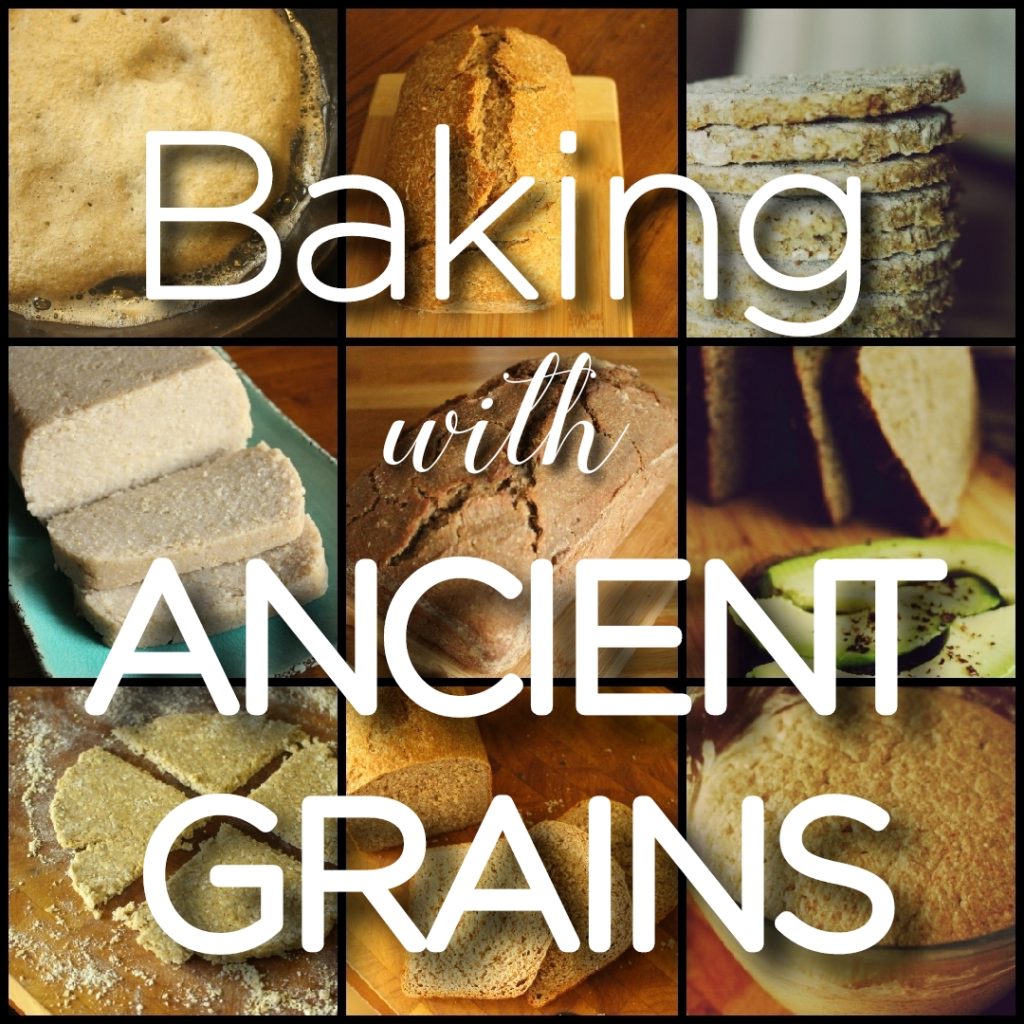Eating gluten-free (or lectin-free) does not mean you need to give up baking and eating good bread. Making sourdough bread at home with grains that are gluten-free (or lectin-free) is simple.

Many gluten and lectin-free recipes I see for sourdough bread include a long list of ingredients, some of which I have never used in my kitchen. These breads may be partially successful in replicating the airy crumb of a bread with gluten but that’s not my style. I want something simple, made from easy to access ingredients.
Millet and Sorghum are grown here in Italy and my family were already eating them (most often in my sourdough polenta and sourdough polenta bread – video recipes here), so I turned my attention to using them for a sourdough bread. To begin with I used a binder (as everyone said you needed one), but after baking it a few times, I realised it worked, and tasted better, without adding extra ingredients!
What you’ll need:
This bread has four ingredients – sorghum flour, millet flour, salt and water. You can buy the millet and sorghum flour or you can, as we do, grind the grains yourself. We use a Mockmill.
To keep this 100% gluten-free (or lectin-free), you’ll need a gluten-free sourdough starter (find my instructions for this here). Do ensure that your water is non-chlorinated (use a filter or leave it to stand out overnight to allow the chlorine to evaporate).

The loaf is baked in a 900g/2lb tin with a lid. If you do not have a loaf tin with a lid, you can create a lid by tenting the tin with aluminium foil.
Simple Gluten-Free (& Lectin-Free) Sourdough
Note: This bread is dense. It will not rise like a gluten bread will. It won’t brown as it’s baked covered. It’s shelf life is short too (through it can be increased by grilling or heating slices). It is however, simple to make, doesn’t require proprietary gluten-free flour blends and tastes good!
Ingredients:
100g gluten-free sourdough starter
425g sorghum flour
75g millet flour
8g salt
c. 325-350ml water
Method:
1/ Mix the flours and salt together in a bowl.
2/ Add the gluten-free sourdough starter to water and stir well.
3/ Pour the water/starter mix into the dry ingredients and stir well with a spoon. Add further water if your mix needs it – you want to end up with a thick paste.

4/ Cover and leave somewhere warm to ferment. Because there is no gluten in this dough there is no need to work it during the fermentation. The length of time you leave it is up to you – my space is c. 22C/72F and I leave the loaf for c.3 hours. At the end of the fermentation time the mix should feel light when disturbed with a spoon and have a pleasant yeasty smell.
5/ Grease and flour or line and grease a baking tin that has a lid (I use coarsely-ground rice flour).
6/ Pour the mix into the loaf tin, gently encouraging it into the corners and then rounding the top of it with the back of a spoon to create a pleasing bread shape.
7/ Cover the tin and leave the bread to proof. In my environment of 22C/72F, I usually leave the loaf 1-2 hours.
8/ Preheat your oven to 180C/355F and when at temperature bake the loaf, covered, for 70 minutes. Because this loaf has a strong tendency to stick to ceramic/glass bakeware, I have then had most success leaving it inside the turned-off oven for an hour before removing to a wire rack. Doing this means I no longer struggle getting it out of the baker! If you’re using non-stick bake ware, you can skip this step.
This bread will not last as long as a bread make from gluten grains. It is delicious still slightly warm, and best eaten within 3 days of baking. You can revive it, tastily, by toasting slices or by frying them in lard or butter in a pan on the hob. I have found it easier to slice with a small serrated knife (not a large bread knife).
If you make this loaf, please share your bake with me! You can comment below or email me at alison(at)ancestralkitchen.com.


Bring ancient grain baking into your kitchen!
Download my free 30-page guide with five healthy and tasty 100% ancient grains recipes.


Hello, I’m in Australia and have great regard for things Italian. My problem is that a friend of mine has recently been advised to take on a lectin and gluten free diet. Your recipe for Simple Gluten-Free (& Lectin-Free) Sourdough caught my eye as it has been very, very difficult to find any sort of recipe for bread for her, let alone one that seems simple. I would be just so grateful if you would allow me a copy of your recipe for this bread and the starter. I do hope you can help as she is absolutely missing having any bread to eat. Her bread up to now has been gluten free which uses rice flour, but rice is now off the list.
Many thanks.
Of course Jeanette. The recipe is above and there’s a link to the post on how to make the starter in it. It is a simple recipe and best eaten fresh but it is a great option for home-made lectin-free bread.
Hi is it possible to make this as normal bread rather than as a sourdough?
Hi Leonnie. I am sure this could be done, yes. I can’t help much though as have never made gluten-free bread with commercial yeast. I’d suggest trying the ‘standard’ amount of yeast for this size of bread (check some recipes) and seeing how it goes.
I love this recipe, thank you. After years without any grains in my diet I am so excited to have a bread that I can tolerate. It took a few tries to get it coming out awesome every time – I had to feed my starter more often and now maintain it by smell and bubbliness not by the clock! And I find that I have to use more water in the bread mix than your recipe to get a good loaf but now I just know the texture I’m looking for I don’t have to measure the water. I slice and freeze my loaves to always have fresh bread available.
Hi Anna and thank you for commenting to let me know how you love the recipe! I’ve never frozen this bread, so it’s great to hear that it works 🙂
This turned out really well – just like the gluten free, lectin free loaves I pay and arm and a leg for online! I love the short ingredient list and they actually taste quite nice; pleasantly tart. Thanks Allison!
Hi Allison. So glad you like this bread. You’re right, so simple yet good. Thanks for letting me know!